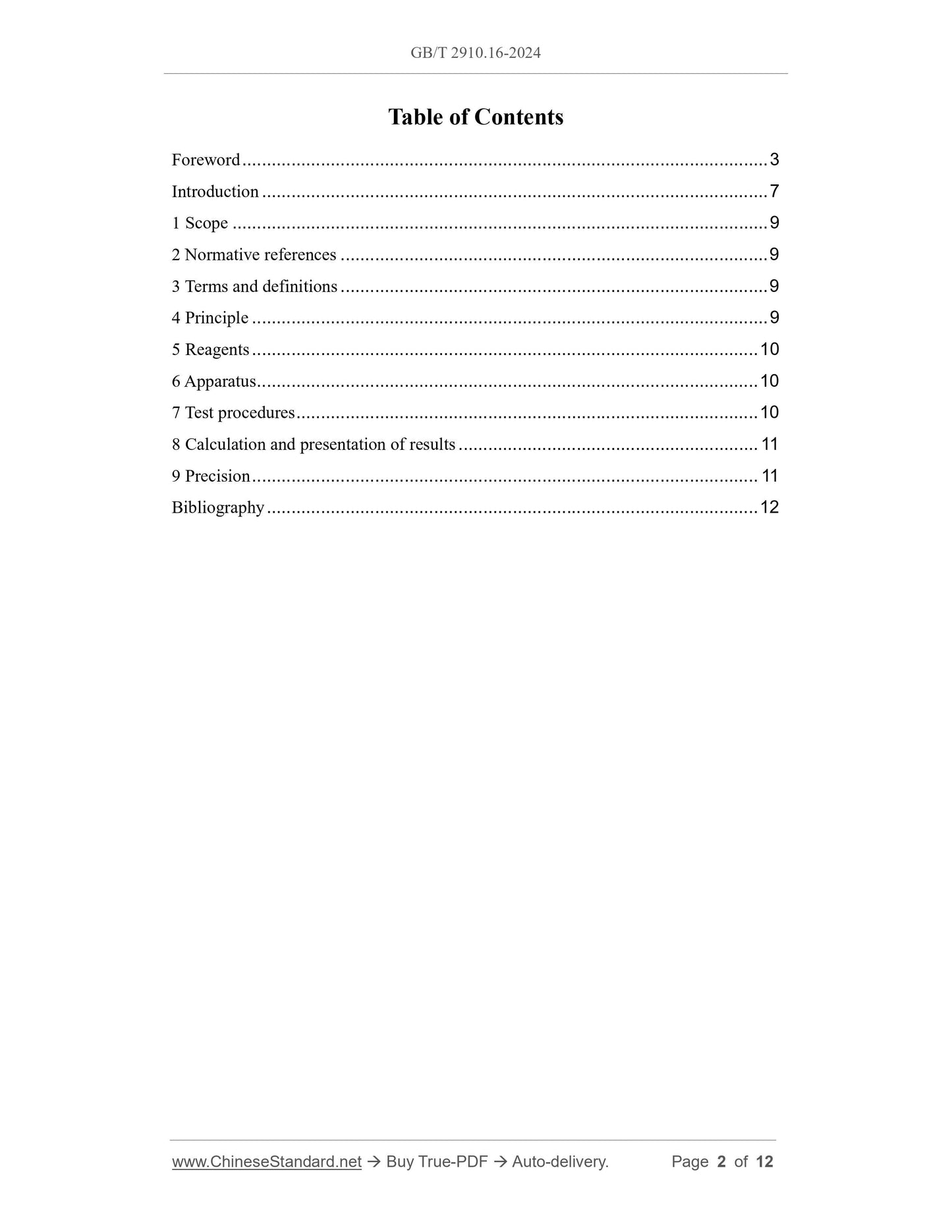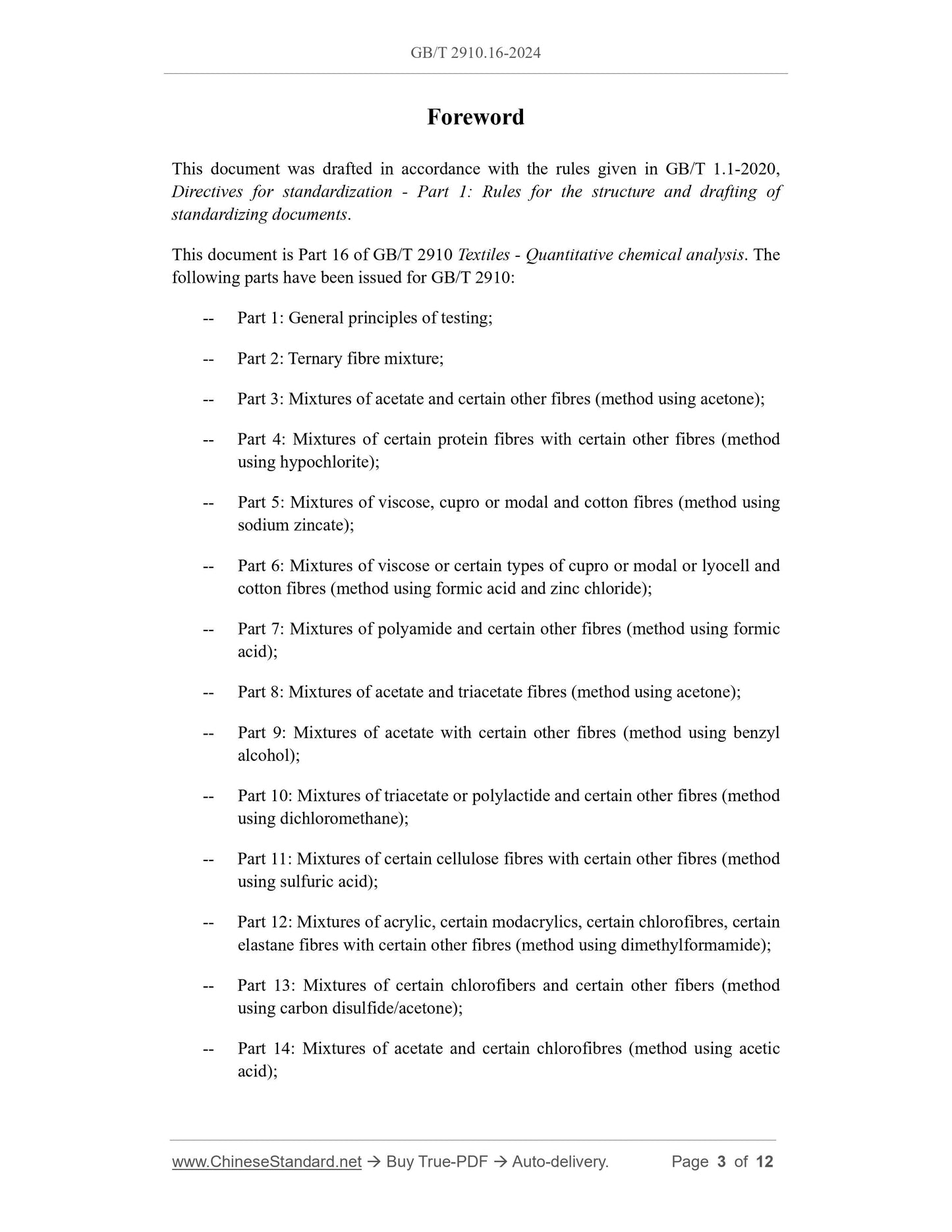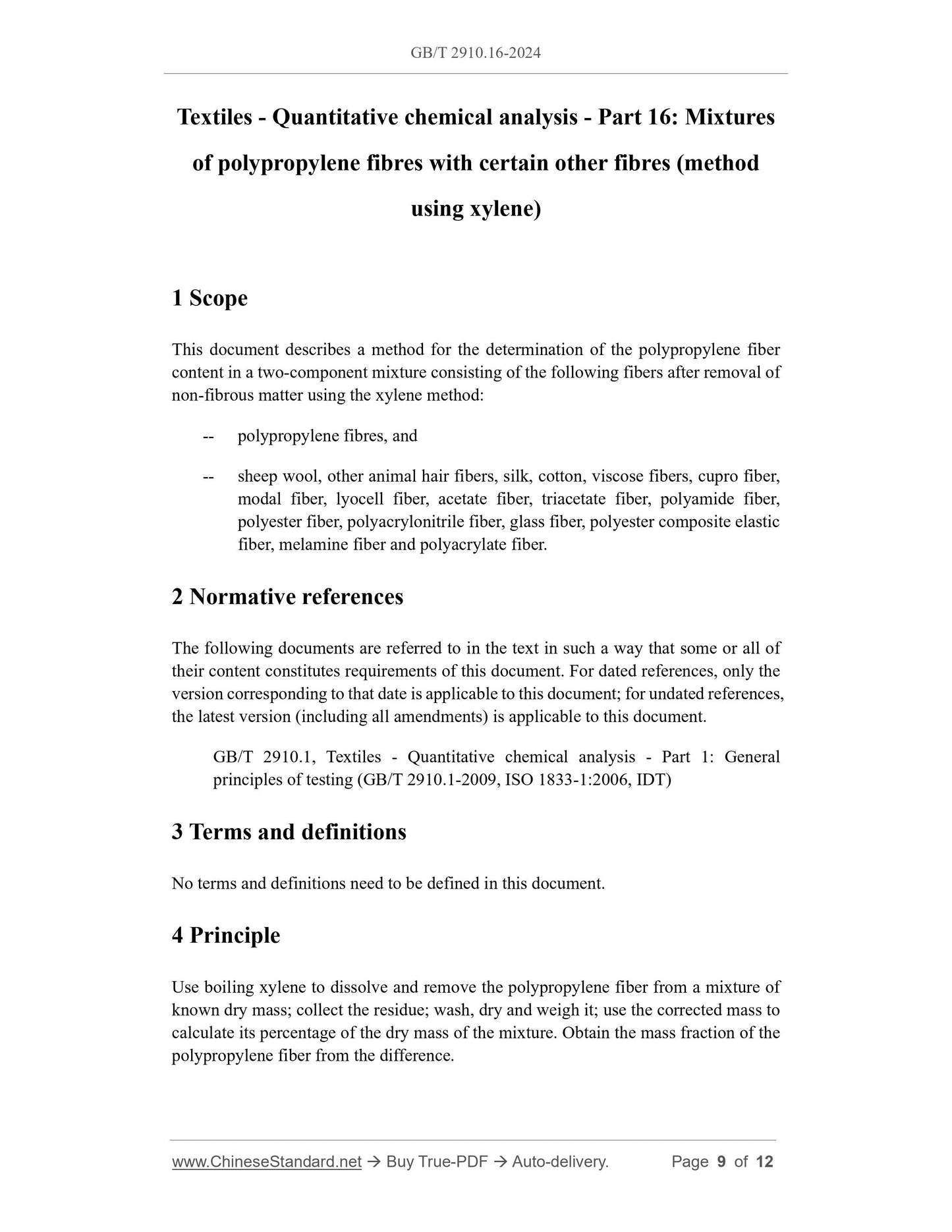1
/
of
4
www.ChineseStandard.us -- Field Test Asia Pte. Ltd.
GB/T 2910.16-2024 English PDF (GB/T2910.16-2024)
GB/T 2910.16-2024 English PDF (GB/T2910.16-2024)
Regular price
$175.00
Regular price
Sale price
$175.00
Unit price
/
per
Shipping calculated at checkout.
Couldn't load pickup availability
GB/T 2910.16-2024: Textiles - Quantitative chemical analysis - Part 16: Mixtures of polypropylene fibres with certain other fibres (method using xylene)
Delivery: 9 seconds. Download (and Email) true-PDF + Invoice.Get Quotation: Click GB/T 2910.16-2024 (Self-service in 1-minute)
Newer / historical versions: GB/T 2910.16-2024
Preview True-PDF
Scope
This document describes a method for the determination of the polypropylene fibercontent in a two-component mixture consisting of the following fibers after removal of
non-fibrous matter using the xylene method.
Basic Data
| Standard ID | GB/T 2910.16-2024 (GB/T2910.16-2024) |
| Description (Translated English) | Textiles - Quantitative chemical analysis - Part 16: Mixtures of polypropylene fibres with certain other fibres (method using xylene) |
| Sector / Industry | National Standard (Recommended) |
| Classification of Chinese Standard | W04 |
| Classification of International Standard | 59.080.01 |
| Word Count Estimation | 8,873 |
| Date of Issue | 2024-03-15 |
| Date of Implementation | 2024-10-01 |
| Older Standard (superseded by this standard) | GB/T 2910.16-2009 |
| Issuing agency(ies) | State Administration for Market Regulation, China National Standardization Administration |
Share







